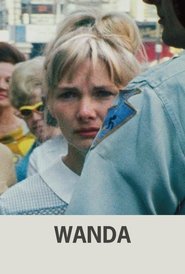There was—and continues to be—discomfort around Wanda because the central character is not a role model. […] Here [is] an American movie that picked up where Italian neorealism had left off, applying its moral principles and aesthetics to rural American backwaters, with an absence of the sentimentality that had derailed so many postwar European films.
— Amy Taubin (Criterion)
The first time I saw [Wanda], I found the protagonist’s miserable existence at the hands of her drifter boyfriend—“No slacks!” he yells at her—so disturbing, I had to stop watching it. […] It was [Elia] Kazan who […] submerged Loden into obscurity when after her death he took credit for Wanda, writing, “It was like a favor I was doing for her, to give her something to do.” As you will see, part of the beauty of this strange and forgotten film is that Barbara Loden and Wanda are one and the same. Even Wanda’s strange attachment to her bank-robbing boyfriend who mistreats her could be a metaphor for her relationship with Kazan. Somehow I see him yelling at her, “No slacks!”
— Illeana (Criterion)
Wanda goes on the road with Norman and the two become lovers on a crime spree in a trope that’s nearly as old as the movies, as if Wanda’s life became so untenable that a divine presence offered her an escape hatch through the rituals of genre cinema. In certain fashions, Norman is no less condescending to Wanda than anyone else, though there’s an unusual respect evident in his refusal to flatter her. […] Norman isn’t born of any fashionable act of man-hating, as we’re allowed to see his own misery—his inability to receive love.
— Chuck Bowen (Slant)
When I first showed Wanda in my feminist film classes in the mideighties, the reaction of most students was similar. They could not perceive the ways in which the film, and Loden’s performance in it, illuminated Wanda’s humanity and that of most women all over the world, who have internalized the misogyny of family, church, and state so thoroughly that they are not able to conceive of a way to fight back. […] I asked [director Barbara Loden] about a very early sequence in Wanda, when the camera follows, from a great distance, the tiny figure of Wanda as she walks across a bleak landscape, cratered by coal mining. The shot alienated some viewers from the get-go; they found it boring. Loden’s explanation: “I wanted to show that it took a long time to get from there to there.” [But] how can such a character hold our attention on the screen and carry us through the narrative of a movie? In part, she does so precisely by being such a revelation. Loden’s discipline, as a writer, director, and performer, in speaking honestly—without sentimentality or exaggeration—for Wanda and all her unrepresented sisters was, in American movie history up to 1970, a complete anomaly. And to a great extent, it still is. We’ve seen other actors playing so-called sluts and so-called stupid girls and victims of abuse. But compared with Wanda, those characters seem like caricatures. […] Often, [the] focus is on Loden’s remarkable face, on which tiny transformations play out—reactions of bewilderment, hurt, and fear or, occasionally, tentative attempts to smile, in the hope that if she tries to be nice, nothing terrible will happen. The rhythms of the camera and of [the film's] decisive editing—all straight cuts, with incalculable ellipses between scenes so that we are as bewildered as Wanda about the direction her life is taking—give the film its spare, even elegant, shape. What begins as aimless wandering becomes a road movie and then a heist movie, tension accumulating along the way until Wanda, breaking loose from an unbearable indignity, finds […] what I see as a fighting chance.
— Amy Taubin (Criterion)
The quintessential movie about realizing that America is shit and that there's nothing on life's horizon but also not knowing how to get out of it. The real Nomadland.

